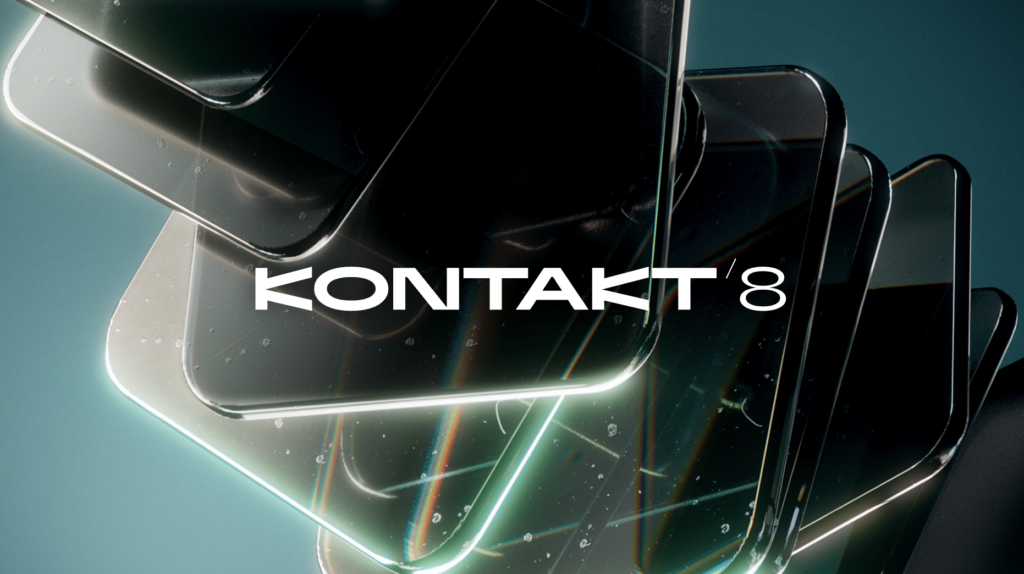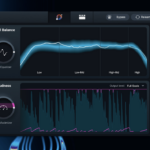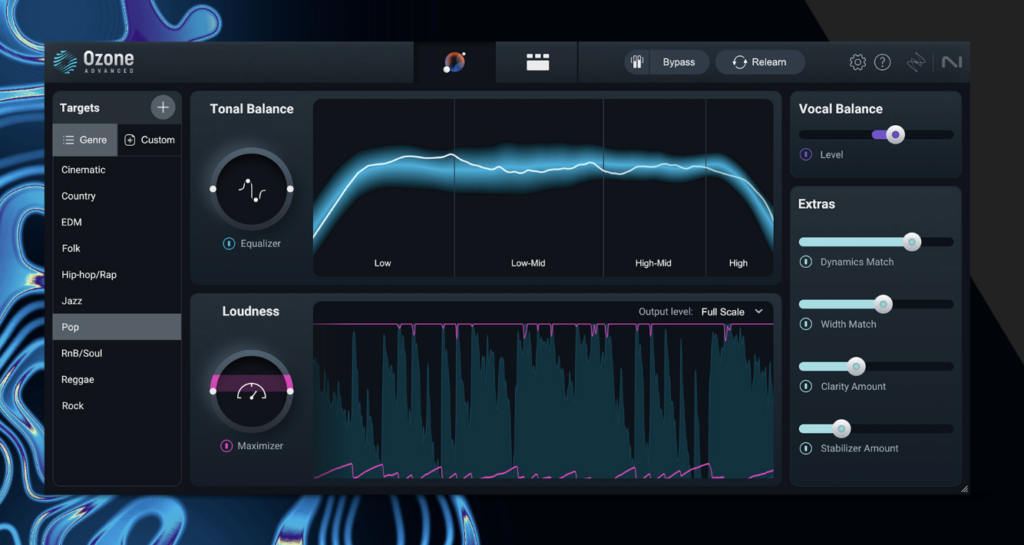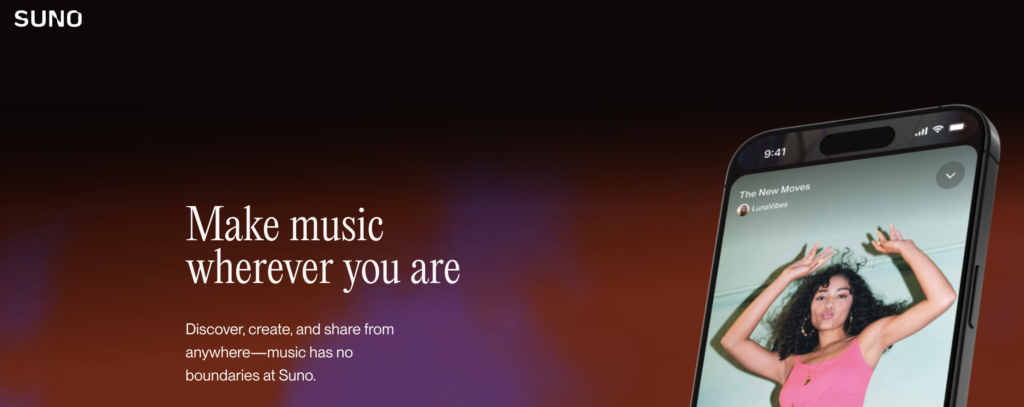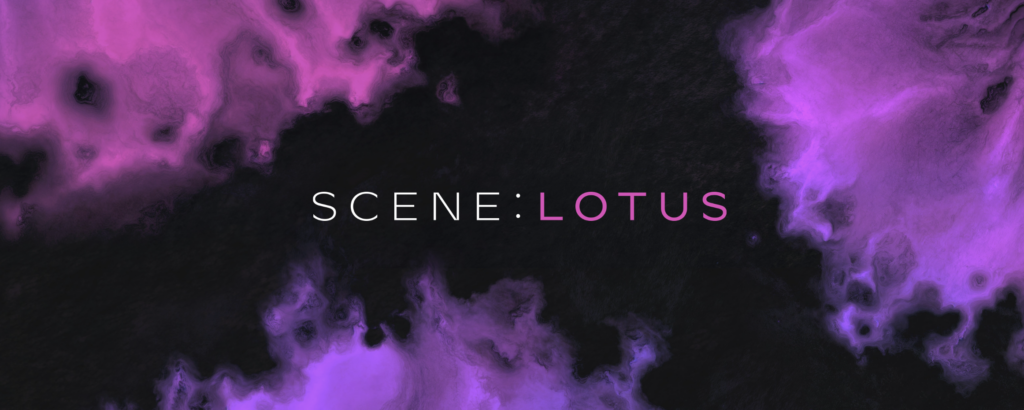Key Takeaways
Kontakt 8 Review:
- Kontakt 8 significantly improves performance with faster loading times and better CPU efficiency
- The redesigned interface and expanded factory library offer exceptional value for new and existing users
- Advanced scripting capabilities and MIDI 2.0 support elevate the creative possibilities for sound designers
- While the learning curve remains steep, workflow improvements make daily use more intuitive
- The price is justified for professionals but represents a substantial investment for hobbyists
Introduction
In the world of digital music production, few tools have shaped the landscape quite like Kontakt. For over two decades, this powerhouse sampler has been the backbone of countless productions across genres, from blockbuster film scores to chart-topping hits.
Native Instruments’ latest iteration, Kontakt 8, arrives with considerable expectations. The company promises enhanced performance, expanded capabilities, and workflow refinements that build upon its already impressive foundation. As someone who’s spent countless hours with previous versions, I was eager to discover whether these improvements deliver meaningful value or merely represent incremental tweaks.
The digital sampling world has evolved significantly since Kontakt’s inception. Competitors have emerged with streamlined interfaces and innovative features. Against this backdrop, Kontakt 8 faces the dual challenge of maintaining its industry-standard status while evolving to meet modern production demands.
This review examines Kontakt 8 through a practical lens. I’ve tested it across various production scenarios, from orchestral composition to electronic sound design. My goal is to help you determine whether this update justifies its price tag and deserves a place in your production toolkit.
Key Features and Enhancements
Kontakt 8 builds upon its predecessor with several substantial improvements. These updates focus primarily on performance, sound quality, and workflow efficiency.
The most immediately noticeable enhancement is dramatically improved loading times. Large sample libraries that previously took minutes to initialize now load in seconds. This improvement alone saves valuable time during busy production sessions. The enhanced CPU efficiency also allows for more simultaneous instruments before hitting system limitations.
The completely redesigned factory library represents another significant upgrade. Rather than merely adding a few new instruments, Native Instruments has rebuilt this collection from the ground up. The new library spans traditional orchestral instruments, electronic elements, and experimental sound design tools. Each instrument showcases Kontakt’s capabilities while providing immediately usable sounds.
For sound designers and developers, the expanded scripting capabilities open new creative avenues. The updated KSP (Kontakt Script Processor) supports more complex behaviors, allowing for instruments with deeper expressiveness and interactivity. These improvements benefit both creators and end-users who gain access to more sophisticated virtual instruments.
The implementation of MIDI 2.0 support significantly enhances expressive capabilities. This next-generation MIDI standard allows for higher resolution control data, polyphonic expression, and per-note articulations. In practical terms, this means more nuanced performances, particularly with orchestral and acoustic instruments where subtle expressiveness is crucial.
Visually, Kontakt 8 introduces a refreshed interface that maintains familiarity while improving clarity. The browser has been reorganized for faster navigation, and the instrument edit view now presents controls more logically. These changes reduce the cognitive load during complex sound design tasks.
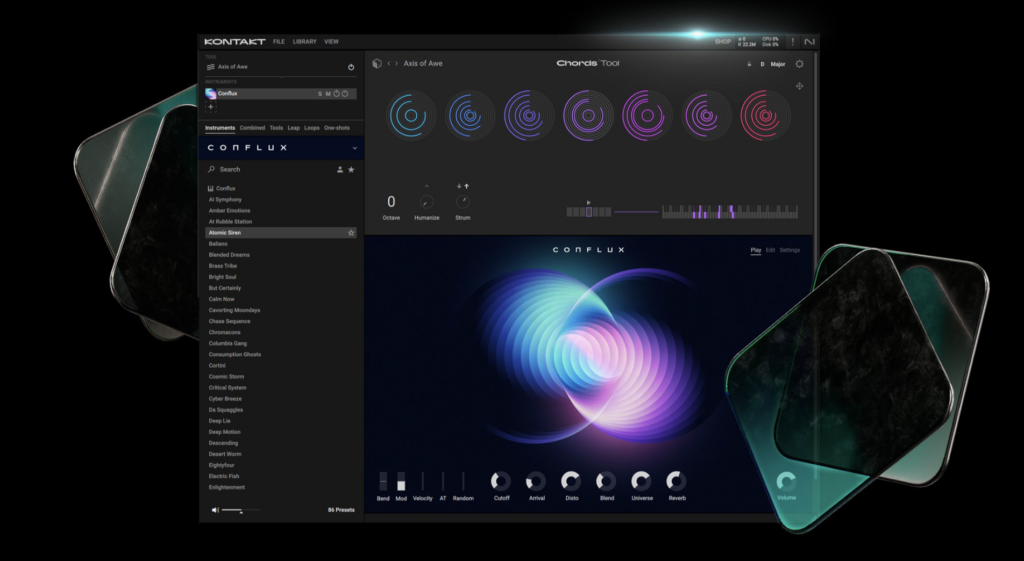
Sound Quality and Versatility
Sound quality remains Kontakt 8’s most compelling strength. The sampling engine delivers exceptional fidelity across all instrument types, from delicate solo violins to thunderous drum ensembles.
The enhanced sample playback engine preserves microscopic details in recordings while handling articulation transitions more naturally. This refinement is particularly noticeable in sustained orchestral instruments, where subtle variations in bowing or breath control now sound remarkably organic. The improvement isn’t merely technical—it translates directly to more convincing performances.
Kontakt 8’s versatility extends across virtually all musical genres. The platform excels equally with meticulously sampled acoustic instruments and heavily processed electronic sounds. This adaptability explains why Kontakt remains the preferred development platform for third-party sample creators spanning classical, jazz, electronic, and world music.
The expanded modulation capabilities now include additional envelope types and LFO shapes, allowing for more complex sound evolution over time. These tools enable everything from subtle timbral shifts to dramatic sound transformations. For sound designers, these expanded options eliminate the need for external processing in many scenarios.
Kontakt 8’s effects section has also received attention, with improved algorithmic reverbs and more musical filters. The new convolution reverb delivers startlingly realistic spaces while using fewer system resources than previous versions. These enhancements allow for more complete sound design within Kontakt itself, reducing the need to chain additional plugins.
Perhaps most importantly, Kontakt 8 maintains backward compatibility with the vast ecosystem of existing libraries. This compatibility ensures your investment in previous sample collections remains valuable while allowing you to benefit from the platform’s improvements.

Usability and Workflow Improvements
Despite its power, previous Kontakt versions sometimes suffered from workflow inefficiencies. Kontakt 8 addresses many of these pain points with thoughtful interface improvements.
The redesigned browser now features intelligent categorization and tagging. Finding instruments based on characteristics like “bright brass” or “percussive synth” works remarkably well. This smart search functionality dramatically reduces the time spent hunting for specific sounds, especially valuable when working with extensive sample collections.
A new favorites system allows for quick access to frequently used instruments across different libraries. This seemingly simple addition significantly streamlines large-scale projects where you repeatedly use the same core palette of sounds. Combined with the faster loading times, these navigation improvements accelerate the initial setup phase of compositions.
For those who create custom instruments, the enhanced mapping editor offers more precise control. Multi-sample mapping now includes intuitive visual feedback showing overlap regions and velocity layers. These refinements make complex instrument creation more accessible, even for those without deep technical expertise.
The overhauled mixer section now includes sidechaining capabilities and sends/returns that function more like traditional DAWs. This expansion allows for more sophisticated signal routing without leaving the Kontakt environment. For standalone use, these additions create a more complete production experience.
One particularly welcome improvement is the expanded undo history. You can now backtrack through dozens of edits when designing instruments, encouraging more experimental approaches to sound design. This safety net proves invaluable when working on complex instruments with many parameters.
Despite these improvements, Kontakt 8 still presents a steeper learning curve than some competitors. The tradeoff for its depth remains complexity, though these workflow enhancements significantly reduce friction for both novices and experienced users.
ALSO: iZotope Ozone 11 Review
Performance in Real-World Applications
Theory and features only matter when they translate to practical benefits in actual production scenarios. I tested Kontakt 8 across several professional contexts to evaluate its real-world performance.
In orchestral composition, Kontakt 8 demonstrates noticeable improvements in both sound quality and workflow. Loading a complete template with strings, brass, woodwinds, and percussion now takes roughly half the time compared to Kontakt 7. The enhanced MIDI 2.0 support allows for more nuanced expression, particularly evident in solo instruments where subtle pressure variations now translate to more convincing performances.
For film scoring, the faster loading times and improved browser make tight deadlines more manageable. Finding the right sound quickly becomes crucial when directors request last-minute changes. The expanded factory library also provides high-quality placeholders when sketching cues before investing in specialized third-party libraries.
ALSO: Best AI for Film Music
In electronic music production, Kontakt 8’s enhanced modulation capabilities enable more dynamic sound design. The improved filters sound notably more musical when pushed to extreme settings. Several electronic producers have already begun creating instruments that leverage these new capabilities for evolving textures that would have required external automation previously.
For game audio implementation, the advanced scripting features enable more sophisticated interactive behaviors. Adaptive instruments that respond to gameplay variables can now incorporate more complex logic without hitting CPU limitations. This expanded potential particularly benefits open-world games where dynamic soundscapes enhance immersion.
Live performers will appreciate the reduced latency and more efficient memory usage. Triggering multiple complex instruments simultaneously no longer introduces the occasional hiccups experienced with earlier versions. This reliability is crucial for stage performances where technical failures aren’t an option.
Across all these contexts, Kontakt 8 demonstrates meaningful improvements over its predecessor. The enhancements feel purposeful rather than superficial, addressing actual needs of working music professionals.
Strengths and Weaknesses
After extensive testing, several clear strengths and weaknesses emerge that potential buyers should consider.
Strengths:
The unmatched sound quality remains Kontakt’s defining characteristic. The sampling engine reproduces minute details with remarkable fidelity, creating genuinely convincing virtual instruments. This core strength continues to distinguish Kontakt from competitors focusing primarily on workflow simplification.
The vast third-party ecosystem represents an enormous advantage. Thousands of specialized libraries from developers worldwide ensure virtually any sound imaginable exists in Kontakt format. This breadth of content makes the platform incredibly versatile across musical styles and production contexts.
The improved performance addresses one of the most common complaints about previous versions. Faster loading times and reduced CPU usage allow for more complex projects without system limitations becoming a creative barrier. These optimizations benefit users regardless of their specific production style.
The expanded scripting capabilities enable increasingly sophisticated virtual instruments. Developers can now create more realistic articulation switching, dynamic response, and performance variations. These advancements translate to more expressive tools for composers and producers.
Weaknesses:
Despite interface improvements, Kontakt 8 still presents a significant learning curve for beginners. The depth that professionals appreciate can overwhelm newcomers. The complexity remains justified by the capabilities but requires commitment to master fully.
The system requirements continue to increase with each version. While optimizations improve efficiency, large projects still demand substantial computing power. Users with older systems may not experience the full performance benefits without hardware upgrades.
The pricing structure puts Kontakt in the premium category. The standalone version represents a significant investment, particularly for hobbyists or beginners. The value proposition makes more sense for professionals who use Kontakt daily, but the initial cost creates a barrier to entry.
Some workflow elements still feel rooted in Kontakt’s origins rather than modern interface design. Certain editing operations require more clicks than necessary, and visual feedback occasionally feels less intuitive than newer competitors designed from the ground up for contemporary workflows.
Pricing and Value for Money
Kontakt 8 occupies the premium tier of music production tools, reflecting its professional target audience and capabilities.
Upgrade Price: 99€
Full Version Price: 299€
As a standalone product, Kontakt 8 requires significant investment. However, this price includes the extensive factory library which provides immediate value. For new users, this collection offers a comprehensive starting point across multiple musical styles. The included instruments showcase professional quality and practical usability rather than merely demonstrating the technology.
Most users will find better value through the Komplete bundles, where Kontakt comes alongside numerous other Native Instruments products. These packages effectively discount the individual components while providing complementary tools that enhance Kontakt’s capabilities. The various bundle tiers allow scaling based on budget and requirements.
For existing Kontakt users, upgrade pricing makes the transition more accessible. The performance improvements alone justify the update cost for professionals who use Kontakt daily. The time saved on loading libraries and navigating the browser quickly compensates for the upgrade investment.
When comparing value against competitors, Kontakt’s ecosystem becomes its strongest argument. The sheer breadth of available libraries—from boutique specialists to major developers—means investing in Kontakt provides access to an unmatched sound palette. This extensive third-party support ensures longevity that newer platforms cannot guarantee.
For professional composers, producers, and sound designers, Kontakt 8 represents excellent value despite its premium pricing. The efficiency improvements, sound quality, and creative capabilities directly impact professional output quality. For hobbyists or occasional users, the value proposition depends on specific needs and budget constraints.
Native Instruments also offers the free Kontakt Player, which allows using a limited selection of libraries. This entry-level option provides a taste of the platform before committing to the full version, though with significant functional limitations for custom content.
Conclusion
Kontakt 8 successfully reinforces its position as the industry-standard sampling platform while addressing key limitations of previous versions. The performance improvements, expanded factory library, and workflow enhancements deliver meaningful value to both new and existing users.
For professional composers and producers, Kontakt 8 remains essential technology. The enhanced performance directly translates to more efficient workflows, while the improved sound quality and expanded capabilities enable more convincing productions. The update successfully balances innovation with continuity, preserving investment in existing libraries while introducing significant new features.
The learning curve and premium pricing still position Kontakt primarily for serious music creators rather than casual hobbyists. However, those willing to invest the time and resources gain access to an unmatched ecosystem of sounds spanning virtually every musical style and production context.
Native Instruments has wisely focused this update on addressing concrete user needs rather than flashy but superficial features. The result is an evolution that respects Kontakt’s legacy while embracing modern production demands. The improvements feel purposeful and practical, clearly informed by real-world production challenges.
In an increasingly crowded market of sampling platforms, Kontakt 8 successfully defends its position through depth, quality, and ecosystem advantages. While newer competitors may offer streamlined workflows for specific applications, none match Kontakt’s versatility and comprehensive capabilities.
For anyone serious about virtual instruments and sampling, Kontakt 8 remains the definitive platform, now with fewer compromises and limitations than ever before. The update doesn’t reinvent Kontakt but instead reinforces and refines what made it indispensable in the first place.
Learn more and explore purchase options on the Native Instruments official website.

